Lobelia inflata
Native lobelia with pale lavender flowers
Lobelia inflata Indian tobacco
This is the most common of the Lobelia genus of the bellflower family. It is, however, often overlooked. The flowers of this native plant are tiny (¼″ long) and tucked individually into the axils of leaf-like bracts. These flowers are widely spaced on the spike-like raceme. The coloration is light blue, or light violet, sometimes almost white. The interior of the corolla is primarily white; its lower interior has 2 small yellow patches and tufts of fine white hair. Like all lobelias, they are five-lobed, with 2 narrow split lobes or 'ears' above and 3 wider split lobes forming a lower lip. The lobes fuse to form a tubular corolla. Between the two upper lobes is a curved style. There is no scent. Only a few flowers bloom at a time on each raceme.
After flowering, the calyx becomes distinctly inflated and balloon-like and grows to ⅛″ in diameter. This is the only Lobelia that has this trait. Many seeds are located inside this swollen calyx. The stem of the plant is slightly hairy.
The basal leaves are oval-shaped or spatula-shaped. Cauline leaves are smaller and more lance-shaped. They both have wavy teeth. The plant can grow tall and thin, often 8-39 inches high. The stem is often branched and is covered with small hairs. The species prefers sandy soil and can be found throughout eastern North America, though less abundant in the Gulf Coast Stats. It is found in every county in Pennsylvania.
It is a summer annual or biennial plant that blooms from July to early October. Native Americans were said to have smoked and chewed the leaves, giving the plant its common name. In spite of this reputation, it should not be chewed nor smoked as it contains toxic alkaloids that can cause nausea and other violent reactions. In the days of "quack" medicine, its effect of "setting one’s insides on fire" was considered beneficial. For this reason it is also known as pukeweed. The purified alkaloid is today used in a number of anti-smoking medications. It is also reputed to serve as an insect repellant if burned.
Habitat & Range
Common in woods, old fields, meadows, and roadsides.
Present throughout the state.
| EMP: | FACU |
|---|---|
| NCNE: | FACU |
Phenology
Flowers July to September.
Characteristics
Inflorescence terminal racemes, leafy-bracted at the base; individual flowers arise from leaf axils
Flowers corolla blue or white, lower 3-lobed lip bearded at the base within; upper lip 2-lobed; calyx with linear lobes
Leaves cauline leaves sessile, oblong-ovate; basal leaves larger and more oval on short stalks; both have wavy teeth
Stems erect, branched, with loose hairs
Fruit strongly inflated
Height avg height 20 to 30″; can grow up to 40″
Identification Tips
Flowers arise from the leaf axils and the calyx becomes inflated after flowering.
Plant Codes
S-rank: S5 (Secure)
G-rank: G5 (Secure)
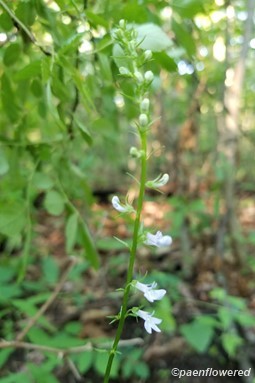
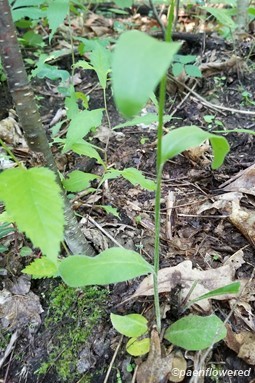
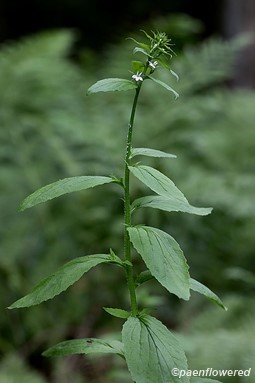
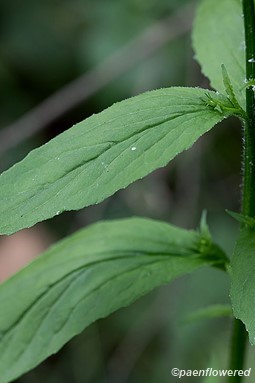
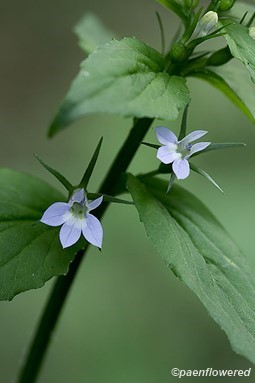
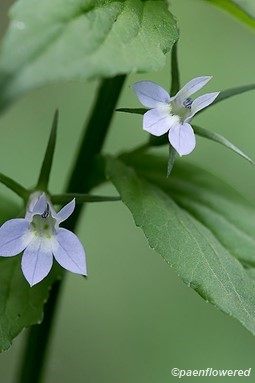
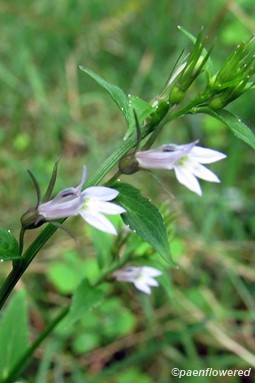
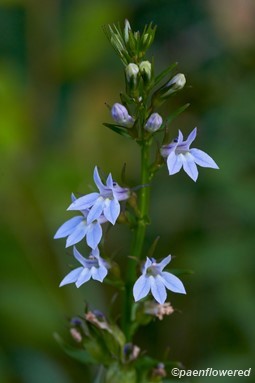
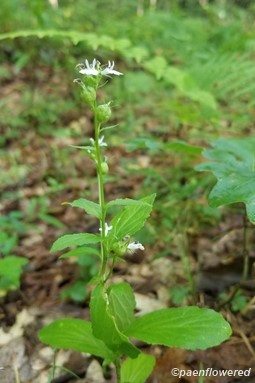
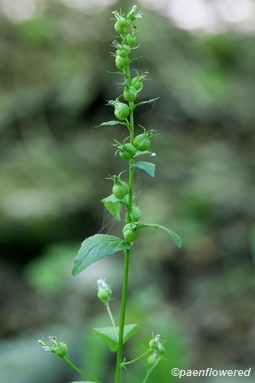
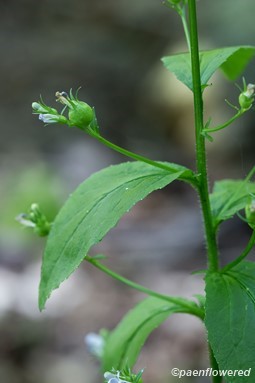





Comments
Have you spotted this plant in your area? We'd love to hear about your experience! Share your comments or questions about the plant below. Comments are moderated before posting.